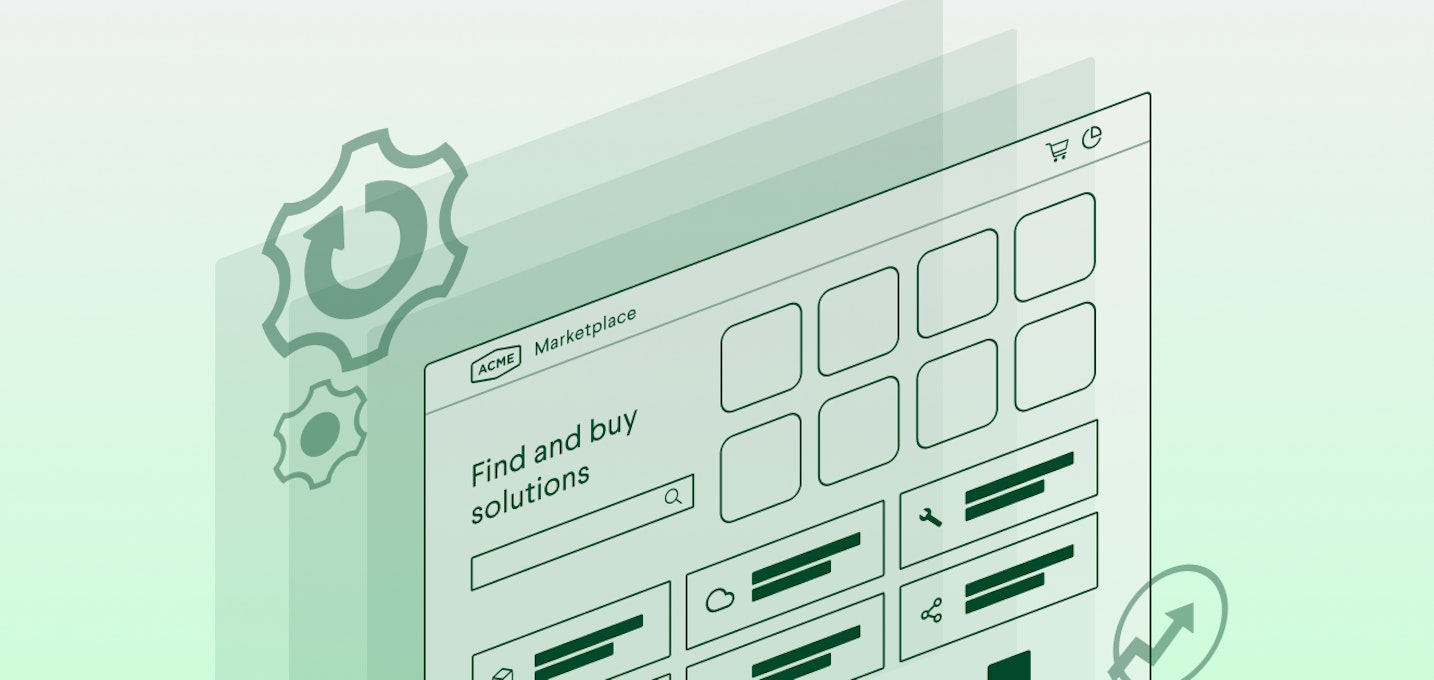Strategy & Best Practices
How White-Labeled Storefronts Can Become Your Most Powerful Customer Engagement Tool
By Rebecca Muhlenkort / June 10, 2025

In this article:
Customer expectations have evolved. Today, 80% of B2B buyers expect the same seamless, intuitive digital experiences they enjoy as consumers. They want tailored offerings, instant access to tools and services, and a frictionless journey—without the hassle of disconnected platforms or lengthy interactions with sales reps. For companies that offer both their own services and third-party solutions, a white-labeled marketplace or storefront is quickly emerging as one of the most powerful ways to meet these rising expectations and build deeper customer engagement.
The rise of B2B marketplaces
As businesses aim to offer comprehensive and convenient solutions, leveraging digital channels like B2B marketplaces and building a partner ecosystem has become crucial. This approach fosters innovation and broadens company offerings, leading to more loyal customers. For more insights, check out our blog on How to Build a Marketplace Quickly and on Budget.
With US B2B e-commerce expected to hit $3 trillion by 2027, according to Forrester, the growth potential through white-labeled storefronts and B2B marketplaces is dramatic.
What is a white-labeled storefront?
Marketplaces and storefronts are complementary in their use. At its core, a white-labeled storefront is a digital marketplace that you brand and control. It allows you to showcase your own services, bundle them with offerings from partners, and present them to customers under your brand—not someone else’s.
Think of it as your own “digital front door,” where customers can browse, learn, and compare your solutions. But more than just a catalog, these storefronts are becoming central to how businesses manage engagement, generate leads, and drive customer loyalty thanks to perks for example
3 ways storefronts drive engagement and growth
Helping customers discover more value—Most businesses today offer more than one product or service—and many refer deals from a growing list of partners. But customers won’t adopt what they can’t find. A white-labeled storefront makes it easy to surface relevant solutions based on a customer’s interests, industry, or behavior. Search, filters, curated bundles, and personalized content all help increase solution discoverability—and ultimately, customer satisfaction.
Creating a seamless, brand-consistent experience—The storefront isn’t just about function—it’s about trust. When customers can explore services in an environment that feels like an extension of your brand, it reinforces credibility. This consistency builds confidence, particularly when offering third-party solutions. Customers don’t feel like they’re being sent off to another provider; they’re interacting with you, even if the service is fulfilled by a partner.
Capturing insights to fuel smarter engagement—One of the biggest missed opportunities in traditional sales channels is the lack of insight into customer interest before a sale. A white-labeled storefront closes that gap. By tracking how customers interact with your offerings, you gain rich behavioral data. This can inform sales follow-ups, marketing campaigns, and product strategy, while also enabling automated nurture programs that meet customers where they are in the buying journey.
Moving from concept to execution
Implementing a storefront doesn’t have to mean a long, custom development cycle. Today’s platforms let you quickly spin up branded marketplaces that integrate with your CRM, billing, and partner catalogs. The key is to start with your customer’s journey in mind: what do they need to see, do, and understand to move forward confidently?
If you're a service provider, distributor, technology advisor, or any kind of channel partner or partner-centric business, a white-labeled storefront can become a central pillar of how you market, sell, and grow—not just a digital brochure, but a dynamic, data-rich engine for engagement.
Want to see how others are doing it?
At our Thrive event, we’re hosting a breakout panel dedicated to this exact topic. You’ll hear from companies who have launched their own storefronts and are using them to build customer stickiness, increase lifetime value, and simplify lead management. Register for Thrive and join the session: www.AppDirect.com/Thrive.
Related Articles

Technology Insights
AppDirect Platform Enhancements—Driving Digital Commerce Forward
Explore AppDirect’s latest platform enhancements that empower providers, advisors, and buyers. From digital ecosystems to a unified hub, discover how these innovations support the entire digital subscription journey for modern business success.By Rebecca Muhlenkort / AppDirect / December 5, 2024

Strategy & Best Practices
How to Build a Marketplace Quickly and On Budget
Discover how to overcome the challenges of creating a marketplace, while accelerating time-to-market, streamlining monetization, and enhancing partner and customer management. Learn from the success of analytics software provider Alteryx in this starter’s guide.By Rebecca Muhlenkort / AppDirect / August 23, 2024

Strategy & Best Practices
Customer Centricity: 4 Ways to Upgrade Your Customer Support Experience
Discover the competitive benefits of outsourcing customer support. Learn strategies to enhance support, drive customer value, and boost your brand. Gain real-world insights from a global telecom provider.By Rebecca Muhlenkort / AppDirect / June 17, 2024